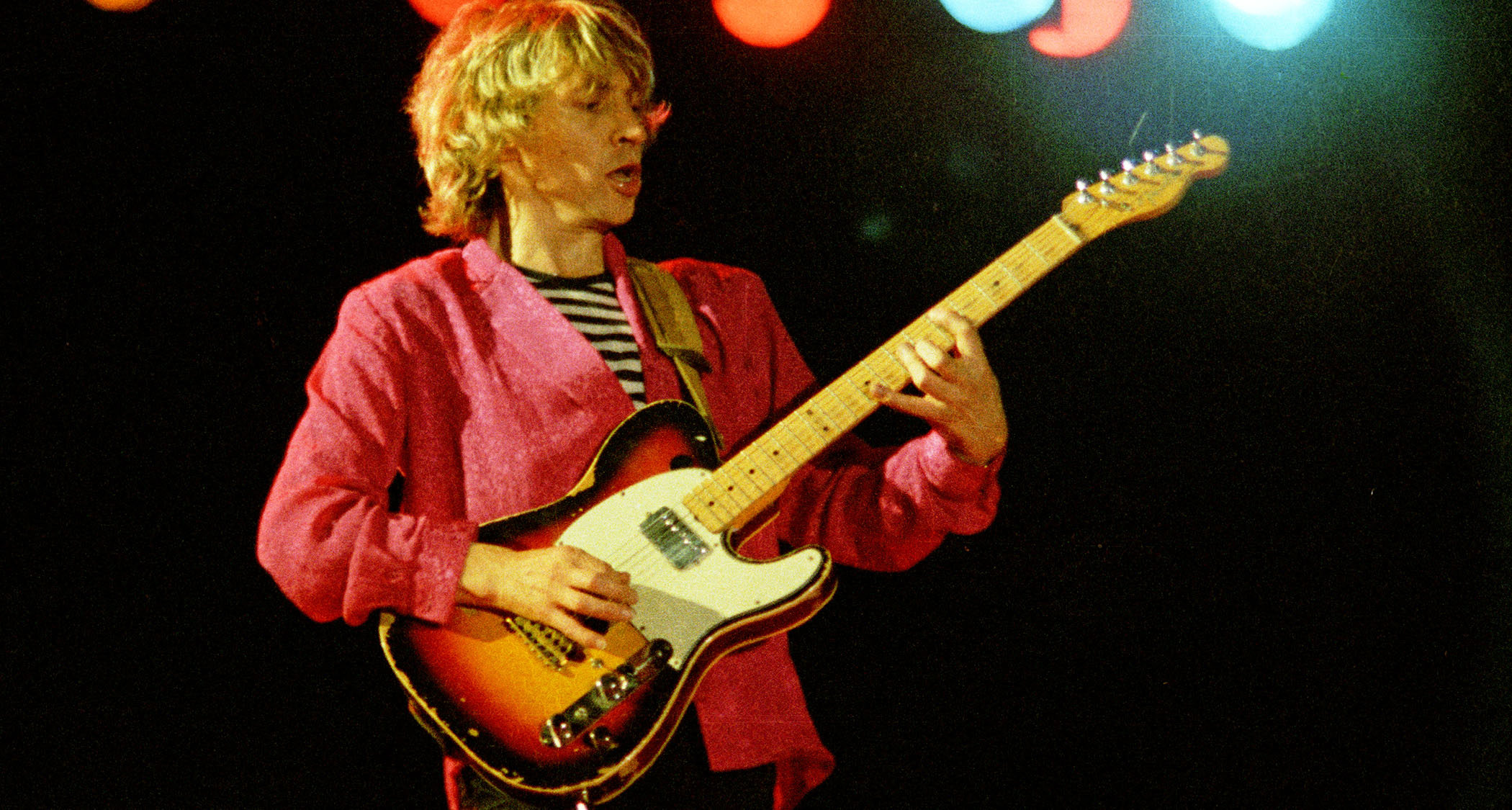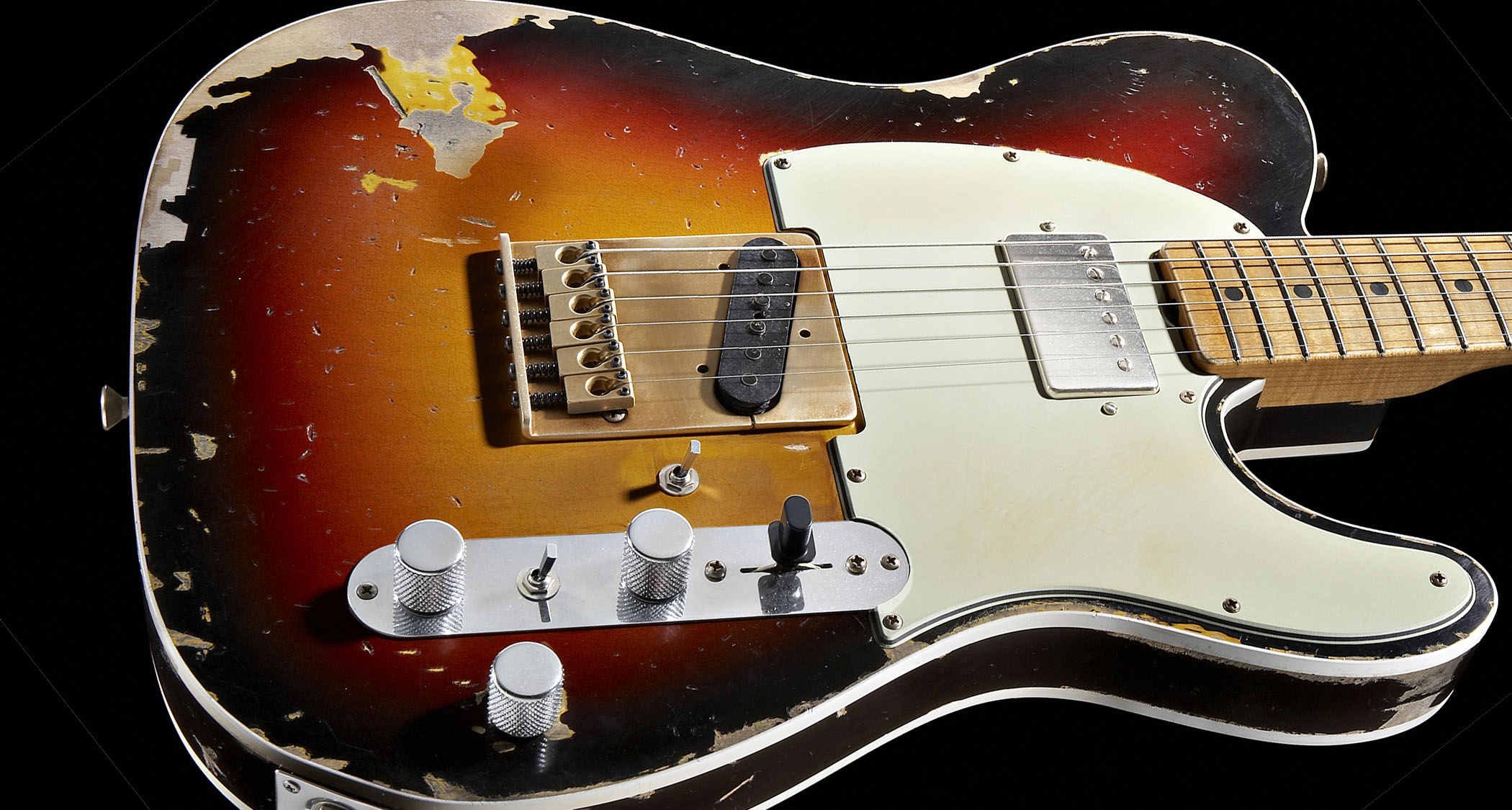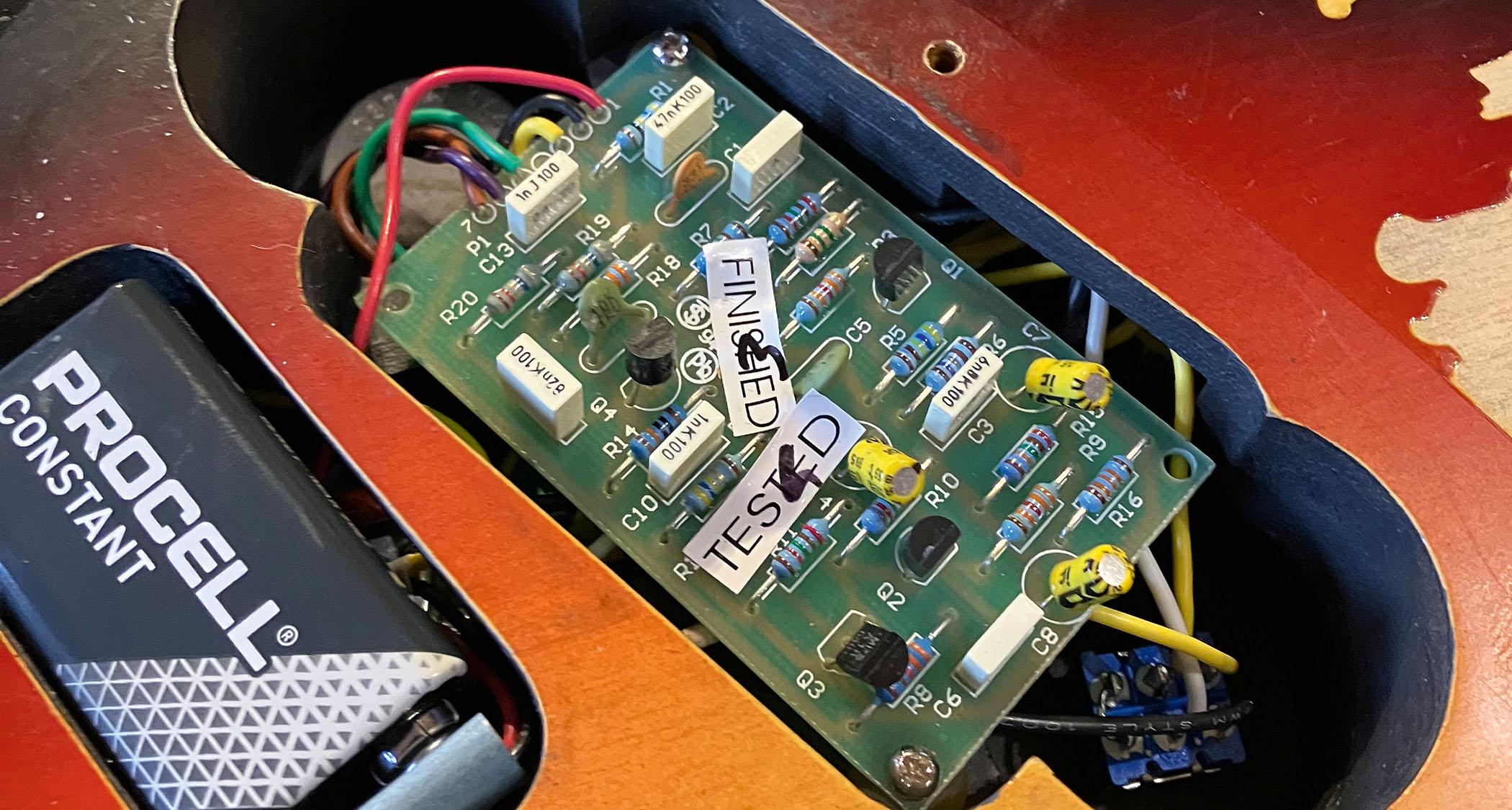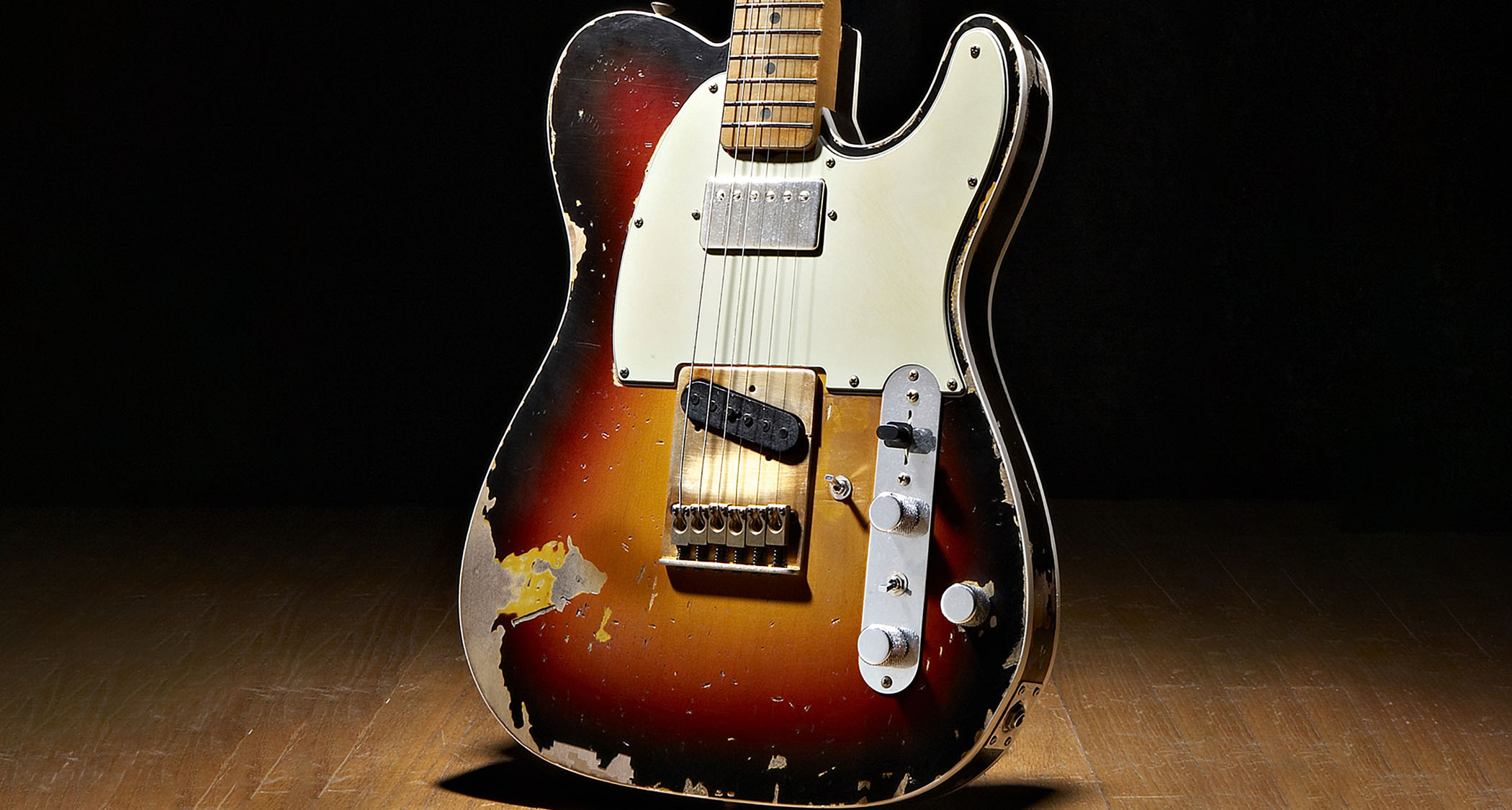“Bearing in mind the colossal success of The Police, isn’t it odd that no-one has ever surfaced to say, ‘By the way, I modded that guitar?’” Investigating the mystery mods of Andy Summers’ mongrel Telecaster
Plenty of modded or self-built guitars have powered the careers of big players. But the origins of one heavily used guitar remain a mystery…

A little over 45 years ago, a then pretty unknown English band released a self-financed album called Outlandos d’Amour. It had been recorded out of hours at a small studio in Leatherhead, Surrey, between January and September of 1978, on secondhand tape found in the band’s manager’s garage.
The first two lead-off singles were banned by the BBC, although on its reissue in 1979, one track in particular changed the struggling band’s fortunes: Roxanne became an international hit and the calling card of this plucky ‘fake punk’ trio called The Police.
For his early career with the soon-to-be-huge trio, guitarist Andy Summers relied – virtually exclusively – on a mongrel Telecaster, which he’d famously bought from a student while teaching guitar in California in 1972 before he returned to London in late 1973 to seek fame and fortune.
It was already well worn when Andy got the instrument, and quite extensively modded, too, with a humbucker in the neck position, a pickup phase switch and an active boost controlled by an additional third knob. All Andy subsequently remembers doing is adding replacement Schaller tuners.
Summers says the guitar is from ’61, although plenty of other sources suggest it’s a ’63: a sunburst Telecaster Custom. Presumably, even if the maple neck is original, it would have been a special order, but more likely it’s from a pre-rosewood ’50s Tele. And that’s just one of its many mysteries…
While we’ve all heard the guitar – and might well have seen it in action back in the day – by the end of The Police in ’86 it was one of many Andy used. Perhaps surprisingly, bearing in mind just how famous that Tele was, no-one, not least Fender, thought it might make sense to offer something similar.
Twenty years after The Police’s last hurrah, however, when attending the 2006 Winter NAMM Show in LA, Andy had a mission: “I had this idea about building a Strat with a Steinberger TransTrem on it, so I went to Fender to talk to them about it. Then they came after me and wanted to build the Telecaster as a part of their Tribute series. They told me they were getting calls every single day about it. So it started in January 2006 and finally they got it together.”
Get The Pick Newsletter
All the latest guitar news, interviews, lessons, reviews, deals and more, direct to your inbox!
All very well, but that 250-only Tribute version was hardly for the masses when it launched in 2007; it cost a cool £9,399 as featured in our Summer 2007 issue. I recently saw one come up for sale at nearly double that.
We also can’t help thinking that Fender might have had some mystic assistance as Andy’s superb book One Train Later, which documented his story, hadn’t yet been published and there were no plans for the The Police to reunite, which they did later in 2007 for a tour that lasted for over a year. Whatever. But that Fender Custom Shop Masterbuilt Tribute did shine a little more light on the guitar. First off, there’s that date…
“I couldn’t find any dates written in the thing,” said Fender master builder Dennis Galuszka, who had taken the original instrument apart and studied it in close detail in preparation for the Tribute.
“If I had to guess, it looks like the neck came off a ’50s Tele because it actually had a little white blonde paint – like they used on ’50s Teles – left on the butt. But the neck pocket had no date written or stamped on it, which was weird. And the body has been routed out so much under the pickguard that all traces of a date are long gone.”

Adding a Gibson humbucker in the neck position wasn’t unique for the time, nor was a pickup phase switch, but if the guitar was worked on – probably during 1971 or before – it’s very early for its retrofitted brass bridge plate and saddles, not to mention its ‘secret weapon’, an active boost/overdrive.
This was engaged by a second mini-toggle placed by the bridge, with the amount of boost/overdrive being determined by the third rotary control to the side of the control plate.
But the biggest mystery of all is who originally modded Andy’s guitar? Did they design and make its active circuit? As far as I know, Andy has never published the name of the student he bought the guitar from, let alone the person who did the modding. And bearing in mind the colossal success of The Police, particularly in the USA, isn’t it a little odd that no-one has ever surfaced to say, “By the way, I modded that guitar”?
Finding Facts
So while the original modder remains uncredited, Andy Summers (or someone on his behalf) continued to tinker with the instrument after he bought it. It’s that brass bridge that gives the game away and, indeed, some 26 minutes and 30 seconds into Andy’s own DVD Can’t Stand Losing You, based on his book, he is clearly pictured with his Tele with its original three-saddle bridge, taken at London’s Hope and Anchor, presumably on either 9 or 23 February 1978, after they’d started recording Outlandos d’Amour.

Andy, or again a third party, made another change, perhaps during the ongoing recording of that album. Although the sound of the band on the first album is more punky than its follow-up, the even more massive Reggatta de Blanc, you can’t help wondering if Andy wasn’t getting the precise intonation for some of the extended chord voicings he began using that became a hallmark of The Police’s sound.
Either way, the next change for the Summers Tele was a six-saddle Fender Tele bridge, which became available from the mid-70s. A few dates into the USA tour on 2 November 1978 at Horseshoe Tavern in Toronto, Summers is clearly pictured with the six-saddle Fender bridge in place.
Exactly when the six-saddle brass bridge found its way onto Andy’s Tele certainly isn’t documented, but by early 1979 it was visible. That certainly fits time-wise for what this writer remembers as the start of the brass parts craze. But there’s another change that’s ushered in with the brass plate: instead of the bridge pickup being suspended within the plate, it’s now direct-mounted to the body.
Another oddity is an apparent crack in the thick brass bridge plate between the treble side of the pickup and the edge of the control plate. That couldn’t have happened once the plate was on the guitar
Another oddity is an apparent crack in the thick brass bridge plate between the treble side of the pickup and the edge of the control plate. That couldn’t have happened once the plate was on the guitar. Why Summers overlooks this apparent bodgery is unclear. To be fair, it was an extremely fast-paced life he led at that period. Maybe he simply forgot.
Then there’s the issue of what actual pickups were in the original mongrel. From di Perna’s interview with Dennis Galuszka, it seems this was where the replica started: “Galuszka decided to tackle the guitar’s electronics first. A Seymour Duncan ’59 proved a very close substitute for the ’59 PAF pickup in the neck position. The bridge pickup was more problematical.
Galuszka says it was probably a custom pickup, perhaps a Seymour Duncan: ‘We ended up having to have Abigail Ybarra here at the custom shop hand-wind all the [bridge] pickups for us,’ he says, ‘because the pickup on Andy’s original has staggered poles, but they’re not bevelled. They were wrapped with black twine instead of the standard white. Just a bunch of unusual things.’
“By trial and error,” the write-up added, “Galuszka discovered the bridge pickup was mounted to the body for grounding purposes, to keep the guitar quiet when the pickup was flipped out of phase.”
Now, that doesn’t sound quite right to me, and I can’t help thinking the pickup was direct-mounted because – possibly due to the wrong size holes in the bridge plate – it couldn’t be suspended. So was a DIY fix to screw it into the body with a trio of small wood screws?
Onboard Boost

Something that also isn’t clearly documented, either, is the onboard boost/overdrive, which required an enlarged control cavity and larger backplate. Our unknown modder was pretty adventurous!
As we explain, this was fitted before Andy got the guitar in 1972, so it’s either a homemade circuit (a boost is a pretty simple circuit) or it came from a pedal, although these were pretty rare at that time.
Something like Electro-Harmonix’s LPB-1 boost with a single-knob boost amount control, which became available via mail order in 1968, might have been a contender, creating ‘overdrive’ when the increased output hit the front-end of Andy’s typically Marshall or Fender amps.
I certainly can’t find any info on the original circuit, and it seems for the 250‑only Fender Tribute run a ‘modified’ Eric Clapton mid-boost was employed (see the image of Andy Summers Preamp, far left) as some sources suggest that by this time (2006) the original circuit wasn’t working.
Don’t forget, this was many years and many, many gigs after Andy had purchased the guitar. How many times over those years did he (or later, his tech) have to unscrew the homemade backplate to replace the necessary nine-volt battery?
Clone Theory
Isn’t it strange that, for such a famous, well-heard and seen guitar, nobody (with the exception of that cost-a-fortune Fender Custom Shop Tribute and some repros by diligent custom makers) has offered a similar model?
Of the many, many guitars that come through our hands here at Guitarist, we’ve had Teles with neck humbuckers, even phase switches, but I can’t remember one with those features and that variable active boost.
One problem, as the unknown modder found, is that the Telecaster’s control cavity is relatively small, hence the extensive rear routing on Andy’s guitar. You can find Tele control plates with holes for three controls, but making one of those an added boost with its necessary circuit board and battery… Well, good luck.
Whichever route you take, who knows, a guitar you might mod on your kitchen table may – in the right hands – go on to help sell many millions of records. Hopefully, unlike our unknown modder, you’ll get due credit!

Dave Burrluck is one of the world’s most experienced guitar journalists, who started writing back in the '80s for International Musician and Recording World, co-founded The Guitar Magazine and has been the Gear Reviews Editor of Guitarist magazine for the past two decades. Along the way, Dave has been the sole author of The PRS Guitar Book and The Player's Guide to Guitar Maintenance as well as contributing to numerous other books on the electric guitar. Dave is an active gigging and recording musician and still finds time to make, repair and mod guitars, not least for Guitarist’s The Mod Squad.
“Even the thought that Clapton might have seen a few seconds of my video feels surreal. But I’m truly honored”: Eric Clapton names Japanese neo-soul guitarist as one to watch
“You better be ready to prove it’s something you can do”: Giacomo Turra got exposed – but real guitar virtuosos are being wrongly accused of fakery, too













